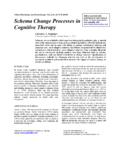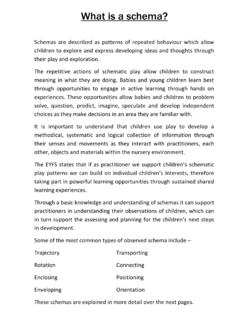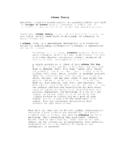Transcription of Common Reporting Standard Status Message XML …
1 September 2017 TABLE OF CONTENTS 3 Common Reporting Standard Status Message XML schema : USER GUIDE FOR TAX ADMINISTRATIONS OECD 2017 Table of contents Abbreviations and acronyms .. 5 Introduction .. 7 Part A CRS Status Message XML schema Information .. 13 Annex A CRS Status Message XML schema Diagrams .. 23 Annex B Glossary of Namespaces and Frequently Used Terms .. 29 Part B CRS Status Message Error Codes .. 31 ABBREVIATIONS AND ACRONYMS 5 Common Reporting Standard Status Message XML schema : USER GUIDE FOR TAX ADMINISTRATIONS OECD 2017 Abbreviations and acronyms CRS Common Reporting Standard CRS MCAA CRS Multilateral Competent Authority Agreement CTS Common Transmission System FATCA Foreign Account Tax Compliance Act FI Financial Institution OECD Organisation for Economic Co-operation and Development INTRODUCTION 7 Common Reporting Standard Status Message XML schema : USER GUIDE FOR TAX ADMINISTRATIONS OECD 2017 Introduction With the first exchanges under the Common Reporting Standard being scheduled for September 2017, jurisdictions are now putting in place the required legislative, operational and IT framework.
2 From an IT perspective, jurisdictions will rely on the CRS XML schema , developed at the level of the OECD as part of the CRS, for exchanging the information with each other and, in many instances, to receive information from their Financial Institutions. As the information to be provided through the CRS XML schema may contain errors, caused by either an incorrect file preparation and/or by incomplete or inaccurate record information, work has been taken up at the level of the OECD with a view to developing a Common XML schema for providing the sending Competent Authorities with information as to such file and record errors in a structured manner. As a result of that work, this document contains the structure of the CRS Status Message XML schema , as well as a User Guide setting out the practical guidelines for using the XML schema . The CRS Status Message XML schema allows Competent Authorities that have received CRS information through the CRS XML schema to report back to the sending Competent Authority, whether the file received contained any of the file and/or record errors.
3 In case file errors are discovered, this will generally entail that the receiving Competent Authority is not in a position to open and use the file. As such, file errors are of a fundamental nature and therefore it is expected that a CRS Status Message is sent to the sending Competent Authority in these instances, with a view to timely receiving a new file (without the file error) with the CRS information contained in the initial erroneous file sent. This approach also reflects the requirements set out in Article 4 of the CRS MCAA in relation to the notification and remediation of errors that prevent the exchange relationship from operating efficiently. Record errors address key issues of data quality of the CRS information received, but do not as such impede the receiving Competent Authority from opening and using the file. The record errors contained in the CRS Status 8 INTRODUCTION Common Reporting Standard Status Message XML schema : USER GUIDE FOR TAX ADMINISTRATIONS OECD 2017 Message XML schema reflect the additional validations that were agreed.
4 As these agreed additional validations are a recommendation, record errors are, unlike file errors, not required to be provided, but are a matter of best efforts. However, in case record errors are communicated to the sending Competent Authority through the CRS Status Message XML schema , it is recommended that the sending Competent Authority undertakes action to address these errors and to provide the receiving Competent Authority with corrected information. The CRS Status Message XML schema may, in addition to communications between Competent Authorities, also be used by a Competent Authority to provide a Status Message to its domestic Financial Institutions. Specific instructions for such cases are marked in italic and [brackets] throughout the User Guide. While the CRS Status Message XML schema allows providing structured information to the sender of the initial CRS Message on any file and/or record errors, the schema does not accommodate substantive follow-up requests or qualitative feedback.
5 For this type of input, Competent Authorities should rely on the usual bilateral communication methods. How the User Guide links to the CRS Status Message XML schema Structure and general requirements Part A of the User Guide contains further guidance on the use of the CRS Status Message XML schema . The User Guide is divided into logical sections based on the schema and provides information on specific data elements and any attributes that describe that data element. The CRS Status Message XML schema Information sections are: I Message Header with the sender, recipient(s), Message type and the timestamp II The body of the CRS Status Message XML schema , containing information as to whether any file and/or record errors were detected or whether the file had no errors, as well as the details of any file and/or record errors found and the decision as to accept or reject the CRS Message . The error codes to be used to indicate file or record errors are contained in Part B of this User Guide.
6 The requirement field for each data element and its attribute indicates whether the element is validation or optional in the CRS Status Message XML schema . INTRODUCTION 9 Common Reporting Standard Status Message XML schema : USER GUIDE FOR TAX ADMINISTRATIONS OECD 2017 Validation elements MUST be present for ALL data records in a file and an automated validation check can be undertaken. The sender should do a technical check of the data file content using XML tools to make sure all validation elements are present. Optional elements are, while recommended, not required to be provided and may in certain instances represent a choice between one type or another, where one of them must be used. Certain elements, such as the Original Message Ref ID element, are labelled as Optional (Mandatory) , indicating that the element is in principle mandatory, but is only required to be filled in certain cases ( to the extent the Original Message Ref ID is available).
7 The User Guide further details these situations and the criteria to be used. Annex A to the CRS Status Message User Guide shows a diagrammatic representation of the CRS Status Message XML schema with all its elements. The numbers next to the headings are the corresponding section numbers in the User Guide text, which provides further guidance on the information to be provided in each element. Annex B to the CRS Status Message User Guide contains a Glossary of namespaces for the CRS Status Message XML schema , as well as a list of frequently used terms. Part B of the User Guide contains further guidance on the file and record error codes to be used when populating the CRS Status Message XML schema . General principles for using the CRS Status Message XML schema For each CRS Message received, the receiving Competent Authority will send a CRS Status Message to indicate the outcomes of the file (and any record) validations.
8 A CRS Status Message refers to only one initial CRS Message (CRS XML schema file), indicated in the field Although a validation of the CRS Status Message is recommended, no CRS Status Message should be sent with respect to another CRS Status Message . As such, CRS Status Messages may only be sent in relation to a CRS Message . Competent Authorities may request consultations pursuant to Section 6 of the CRS MCAA, in case discussions with respect to a CRS Status Message are required. A request to correct or delete any of the records in a CRS Message ( a CRS XML schema file) should not be sent by the sending Competent Authority until the earlier of the receiving Competent Authority indicating 10 INTRODUCTION Common Reporting Standard Status Message XML schema : USER GUIDE FOR TAX ADMINISTRATIONS OECD 2017 through a CRS Status Message that the initial file has been received as valid ( Status is Accepted) or 15 days as of the sending of the CRS Message .
9 Referencing Each Status Message sent in accordance with the CRS XML Status Message schema must only refer to one CRS Message ( one CRS XML schema file), as indicated in the field OriginalMessage. OriginalMessageRefID. It is not acceptable to send a Status Message for another Status Message , as there will be no validation carried out on a Status Message . Relationship between the Status indicated and validation errors When the Competent Authority that has received the original CRS Message indicates in the CRS Status Message XML schema that the original CRS Message has been rejected, at least one error (file error or record error) must be specified. When no file error or record error is indicated, the original CRS Message must be accepted. Even if error(s) are specified, the original CRS Message can still be accepted, in which case it describes errors deemed not grave enough to justify a rejection by the receiver. For instance, in case of file errors, a file could still be accepted, if there are only minor XML validation errors (while notifying the file errors).
10 In case of record errors, the general approach should be that the file is accepted, unless the record errors are so recurrent and frequent that the file is to be rejected as a whole. When the Status is rejected, the file must be corrected and resubmitted when the rejection is due to file errors. In case the Status is rejected due to a large number of record errors, the concerned sending and receiving Competent Authorities may consult each other in accordance with Section 6 of the CRS MCAA, with a view to resolving the issues. When the Status is accepted, only the records errors must be corrected via a new correction Message . How to report error(s) through the CRS Status Message ? If the Competent Authority receiving the initial CRS Message encounters one or more file errors, it rejects the received file and returns a CRS Status Message with the found errors. The Competent Authority that sent the initial CRS Message must then correct its implementation and send back the Message .


















